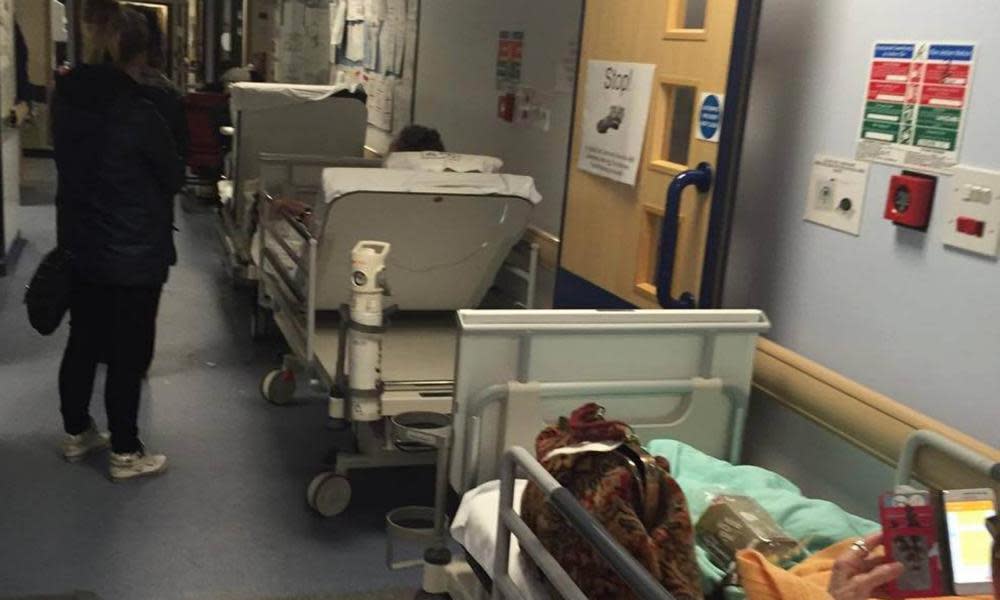Don’t blame GPs for NHS crisis. Blame chronic cuts to social care | Zara Aziz

The ongoing A&E crisis has shifted attention on to GPs. We are being blamed for being less accessible (with appointments hard to get or surgeries not being open for long enough), while A&E is open 24/7 and therefore faces unchecked demand.
But this makes little sense. You only need to take a walk through an A&E department to see why: long trolley queues in corridors and acute admission units exist because of cuts in bed numbers and delayed discharges from a shortfall in social care. These are not patients who can be seen in GP surgeries and sent home on a prescription.
Last year there were about 23m A&E attendances in England of which 65% were at major A&E departments – an increase of 2.2% when compared to 2014-15.Although the number of patients attending A&E is continuing to rise (an average of 1,400 more per day than last year), as a percentage of total hospital patients, admission rates were roughly the same last year (20.2%) as in 2009-10 (21.8%).
Many of those now admitted to A&E are frail and elderly patients known to their GP or to the council’s social adult care team. A GP home visit would also have led to an emergency admission, because such patients have reached a crisis. The GP may have got their patient admitted directly to a hospital bed if the referral was made early in the day; but once beds start to run out in the afternoon, patients admitted by GPs also face long waits on trolleys in corridors.
GPs are seeing more patients than ever – an increase of 15.4% in total GP contacts since 2010-11, with more than 350m consultations every year – but access to appointments is still problematic for many. There are various reasons for this: an ageing population with long-term conditions, a rise in mental health problems and social deprivation, and more reliance on health professionals for advice for minor illnesses.
I have been a GP in Bristol for 10 years. We offer 15 minutes for routine problems, and 10 minutes for urgent, on-the-day appointments. If a patient presents with a few urgent problems, we would manage these, regardless of time. But with the current system of time pressures and seeing up to six patients every hour and “extras” added on busy days, GPs are often only able to deal with one or two problems. I find that despite the cushion of an extra five minutes, every day feels pressured – with 50 to 80 patient contacts in the form of appointments, prescriptions, hospital letters, referrals and home visits.
Most GPs would like longer appointments, but this would mean seeing fewer patients each day. Based on analysing demand, a certain number of routine and urgent appointments are set aside for each day of the week, but this system only works with enough staff. While some patients will abuse urgent appointments for routine problems, there is also the danger that others who are willing to wait a few weeks may need more acute care, having not seen the doctor early enough.
Sadly, after years of stripping funding from health and social care services provided in the community, there are few resources for patients who are on the cusp of hospital admission. Yet the government has little appetite to focus on these crucial services. Instead it continues to beat the drum on GP access and seven-day working despite there being no evidence to show that extended GP opening reduces A&E demand.
Patients prefer better access to GP appointments across normal hours, which requires an increase in the number of GPs at a time when there is a recruitment crisis. The real way to reduce hospital admissions must come from an expansion of robust social and primary care.

 Yahoo News
Yahoo News 
